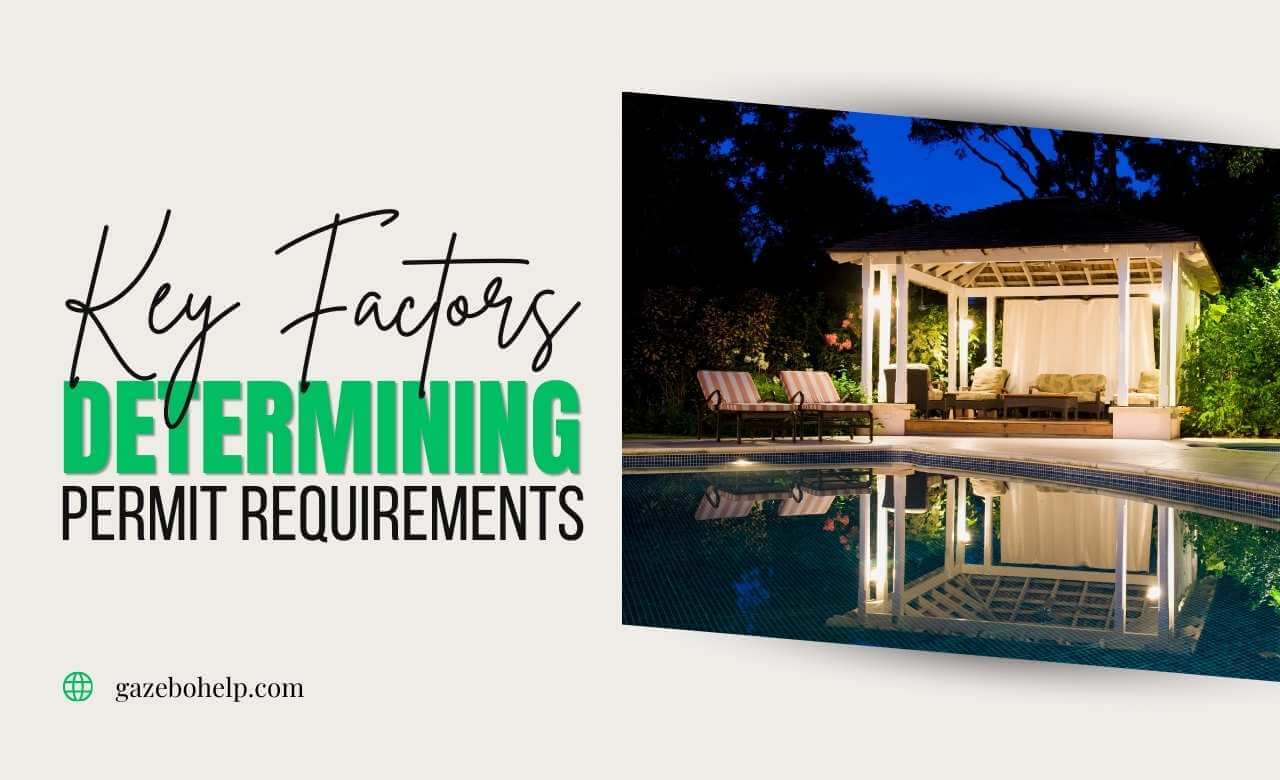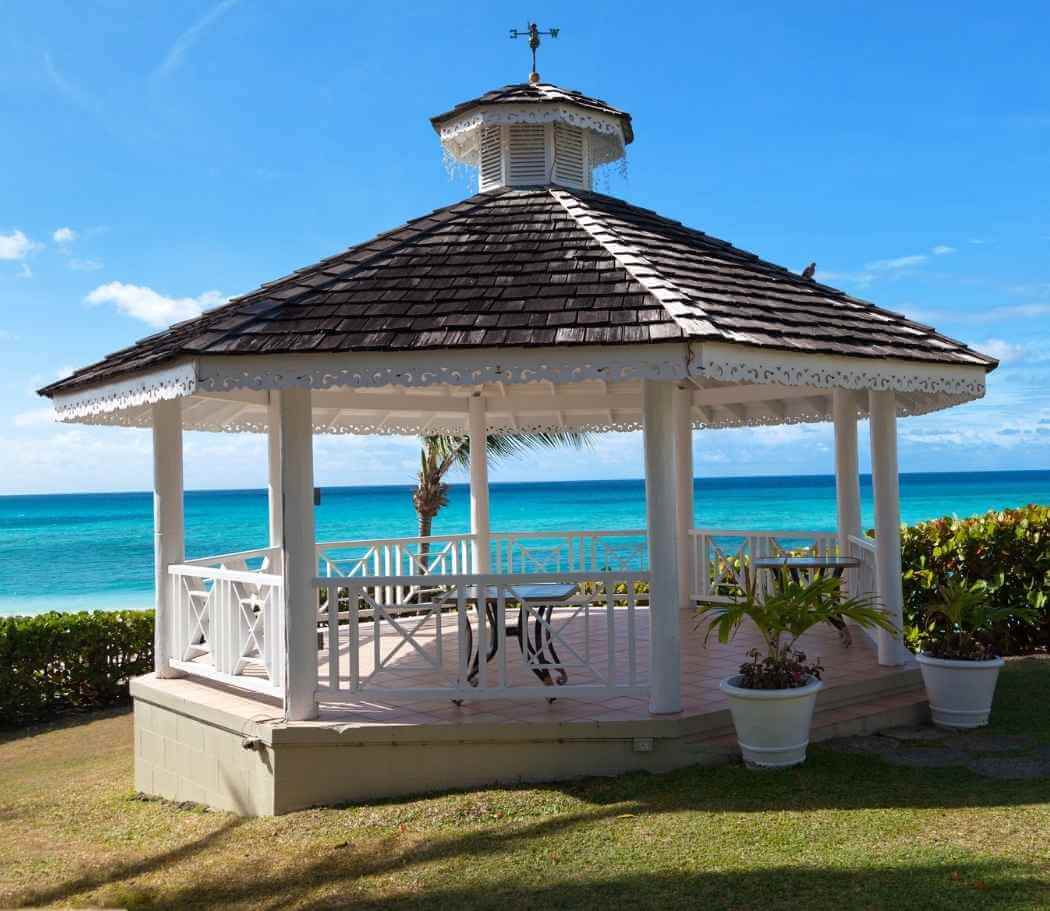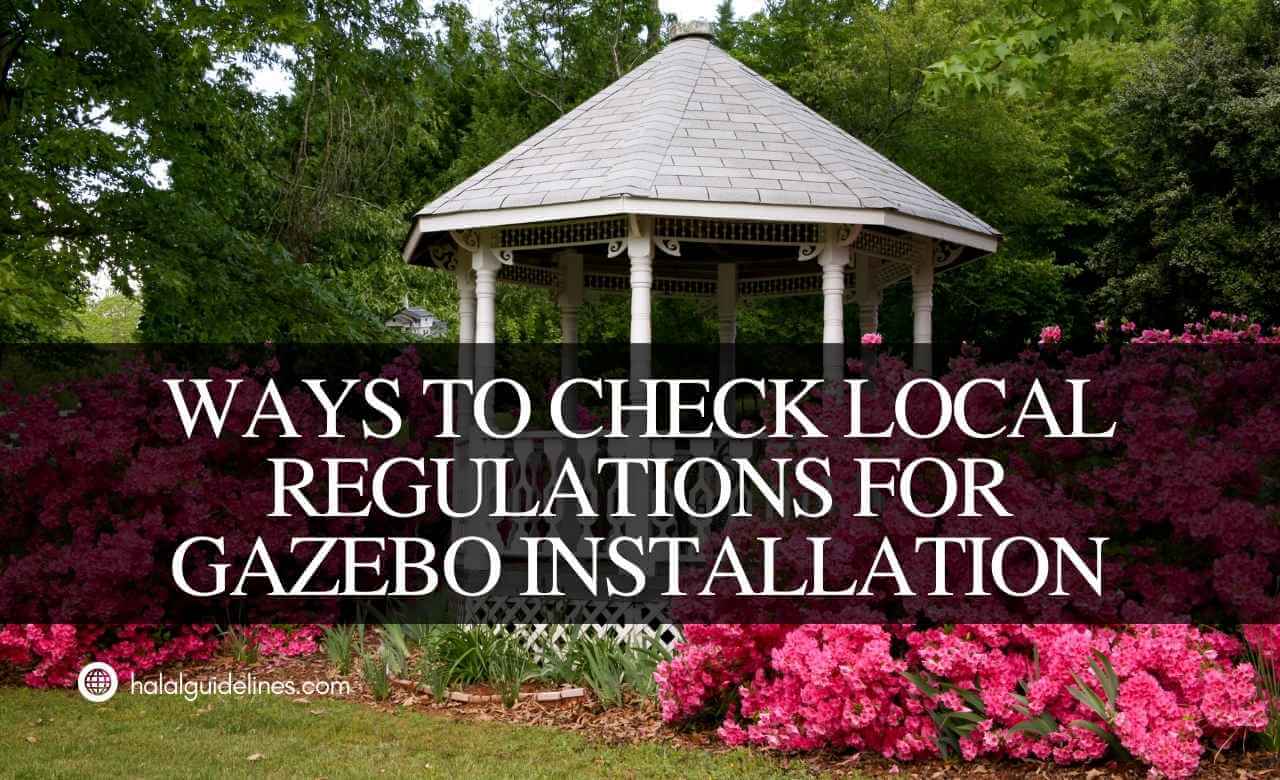Phone:
(701)814-6992
Physical address:
6296 Donnelly Plaza
Ratkeville, Bahamas.

Yes, building a gazebo in the USA often requires a permit, but the exact rules depend on local and state laws. Regulations can vary widely based on factors like size, location, intended use, and foundation type.
Knowing these guidelines can help you avoid unnecessary problems and confirm a smooth construction process. This will help you understand when a permit is needed, how to obtain one, and the steps to make sure your gazebo is fully compliant with local regulations.

There are some specifications mentioned by the state laws that need to be followed when planning the installation of the gazebos at your desired location.
Here are some of those rules that are important to be considered before building a gazebo in the USA:
The overall size of your gazebo plays a major role in whether you will need a permit. While smaller gazebos under 100 square feet may not require a permit, this threshold can vary widely between localities.
Larger gazebos, especially those over 200 square feet, typically need approval from building authorities. Besides the total square footage, height restrictions may also apply, with some areas requiring permits if the gazebo exceeds a certain height.

The placement of the gazebo on your property is another critical factor. Local ordinances often regulate setbacks, which are minimum distances that the structure must maintain from property lines, nearby buildings, and utility easements.
For example, you may be required to build a certain number of feet away from fences, neighboring properties, or public pathways.
If your gazebo is planned near utility lines or designated easements, such as those for drainage or electrical access, additional restrictions may apply. Areas with strict neighborhood associations or HOAs may have separate rules about visibility and placement to preserve aesthetic standards. Always check with your local zoning office and any neighborhood associations to confirm placement guidelines.
The way you plan to use your gazebo affects permit requirements as well. Gazebos used as occasional outdoor shelters or for simple gatherings might not require extensive permits. So, if you intend to install permanent features such as electrical wiring for lights or outlets, plumbing for water access, or HVAC systems for temperature control a permit will almost always be required.
In many areas, using a gazebo as extra living space, a workshop, or an entertainment area may require zoning changes and extra permits, especially if you add utilities like electricity or water. If you change how the space is used like adding a kitchen or turning it into a home office you might need even more permits.
The type of foundation you choose can determine if you need a permit because it affects how permanent and stable the structure is. A gazebo with a simple foundation, like gravel, sand, or pavers, may not need a permit since it can be moved easily and doesn’t affect the land much.
But if you choose a stronger foundation, like a concrete slab or footings, you will probably need a permit because it permanently changes the ground.

Some regions consider the environmental impact of new structures, especially if the property is near wetlands, protected areas, or significant vegetation. Local ordinances may regulate tree removal, land grading, or landscape changes to preserve the natural surroundings.
If building your gazebo requires extensive clearing, excavation, or altering of natural water flow, a permit may be needed to verify compliance with environmental protections.
Permits are usually needed based on things like the size, location, intended use, and foundation of the gazebo. Other factors like the environment, weather conditions, and neighborhood rules may also matter.

There are some laws specified by the Local government that you must follow in according to avoid any legal actions and smoothly use your gazebo setting.
You should check with your local building office to see if you need a permit for your gazebo. It’s best to get the right info from them because rules are different in each area.
They can tell you about size limits, location of placement, and any other rules you need to follow. The building office will give you all the details you need to follow the rules in your area.
When planning to get a permit for a gazebo in the USA then online information can help a lot. Many city and county websites tell you about building rules and what permits you might need.
You can also ask questions and get tips from people in online discussion groups or community forums. Just make sure any information you find is current and applies to where you live.
The experts know about local building rules and can tell you what permits you need. These professionals understand zoning laws and can guide you through them, which saves time and helps avoid problems.
Getting advice from experts makes sure your gazebo follows all the rules and this makes sure that you do not need to face any problem.
For more specific guidance, consider visiting your local government office in person. This is often the most reliable way to get answers directly from the authorities.
You can ask for any relevant building codes, zoning laws, and permit requirements, and even pick up printed materials that clearly outline local regulations. Visiting in person also allows you to ask questions and receive immediate answers, helping you avoid misunderstandings.
The application process for submitting a permit is quite facilitative, convenient for citizens, and at the same time making sure that rules are being implemented.
Start by contacting your local building department to confirm whether you need a permit for your gazebo. Regulations differ by area, and it’s essential to understand the specific rules for your location. They can provide details on size restrictions, required setbacks, and other regulations that may apply.
Once you confirm the need for a permit, gather the required documents. Typically, you’ll need a property survey or plot plan, a detailed design of your gazebo (including size, height, and materials), and a site plan showing where the gazebo will be placed on your property. These documents are important for getting approval.
Obtain the permit application from your local building department. This form will require you to provide information such as the gazebo’s specifications, location, and intended use. Fill out the application carefully, making sure all details are accurate to avoid delays or rejections.
Once the application is completed, submit it along with your documents to the building department. Usually, there is a fee involved, which can differ based on the size of the gazebo and local rules. Make sure to pay the fees as required, as failure to do so can delay the process.
After submitting your application, the building department will review it to make sure that your plans meet local codes.This step can take anywhere from a few days to a few weeks, depending on where you are and how complex your project is. The department may request additional information or revisions if needed.
If everything is in order, you will receive your permit approval. This signifies that your plans have met the local building and zoning regulations. In some cases, the permit might be issued with conditions, so make sure you understand all the requirements before beginning construction.
Once you have the permit, it’s important to keep it visible during the entire construction process. Local authorities may require you to post the permit at the construction site to confirm that the build is being done legally and by local codes.
As your gazebo is being built, you will likely need to schedule inspections. These inspections help confirm the structure is safe and compliant with the regulations. Your local building department will guide you on when inspections are needed. Typically, a final inspection is required after construction is completed.
After the final inspection is conducted, if your gazebo passes all necessary checks, you’ll receive the final approval to use your structure. This is when the building department officially verifies that everything meets local codes, and your gazebo is ready to use.
The things that are completed and utilized productively always have their positive effects and also comply with your intentions of following the rules.
Here is a list of some benefits that a Gazebo permit can give you:
Getting the right permit for your gazebo ensures it meets local building codes, is safe, and avoids potential fines. It gives you peace of mind that your structure is built properly and complies with safety standards.
A permit also adds value to your property, showing you followed the right procedures, which could be important for future transactions or insurance. By consulting local authorities and adhering to regulations, you can enjoy your gazebo without any issues down the road.